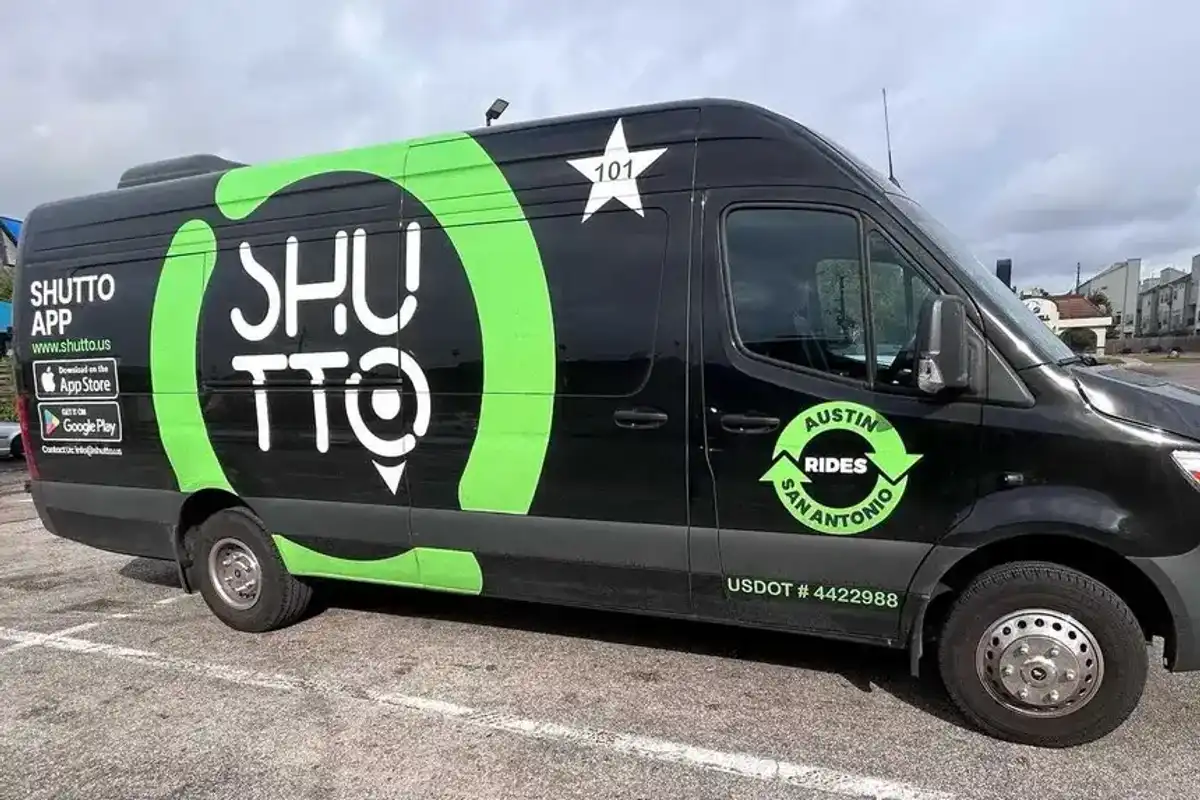Texas robotics company expands in Houston with service-focused automation technology
order's up
Snazzy sombrero-wearing robots are gliding over to your table, carrying chips, salsa, and drinks, electronic eyes wide open on its interactive screen, ready to serve. The bot, provided by the new Houston franchise branch of RobotLAB Inc., debuted at Johnny Tamales Tex-Mex Cantina in Missouri City last week.
The restaurant's owner, Anil Patel, arranged for a one-month trial rental of the machine. But so far, he tells InnovationMap that he’s pleased with his “no-brainer” decision to add a small food delivery robot, which he says has huge marketing potential.
“I’m a sucker for technology. You look at it, and I think this is the future,” says Patel, who used to work in the health care industry.
That vision is shared by Elad Inbar, founder and CEO of Dallas-based RobotLAB, who in July expanded his company’s Texas franchise operations with the opening of a Houston branch.
“For many years, robots were toys — for geeks. You had to build them yourself, program them yourself,” Inbar says.

But the electronics revolution that brought handheld phones to the mainstream inspired Inbar to turn that concept to robotics when he formed RobotLAB in 2007.
“To me, this was completely a wake up call — seeing the market shift, and you know, bringing the opportunity to the mass market,” he says.
The company started by providing small robots to schools, and the company now works with two-thirds of the school districts in the country, Inbar says, touting that it is the "largest, most experienced" robotics company.
Keith Edwards, who owns RobotLAB’s Houston franchise with his brother Daniel, said his office aims to provide 50 robots in its first year of operation. While the use of robots has become more common globally, especially in Asian hotels and restaurants, for American business owners, robots are definitely not a standard decision, Edwards says.
The challenge lies in educating them about how robotics provides a solution for staffing shortages, Edwards says. With the touch of a button, the robot used in Patel’s restaurant can be programmed to sing happy birthday and deliver a dessert, or return dirty dishes back to the kitchen sink.
Through its franchisees, RobotLAB has already set up robots inside numerous restaurants, including eight food delivery models at four Houston locations of revolving sushi bar Kura Sushi.
Wings Over Frisco in the Dallas metro area and entertainment complex AREA 254 in Killeen also use RobotLAB food delivery robots. In August, the Tulsa International Airport introduced, on a trial basis, “Cloi,” another bot from RobotLAB, that guides visitors and has a selfie feature.
RobotLAB provides some 50 types of robots, Inbar says, ranging in function from cleaning, warehouse stacking, to food delivery, with plans and potential for more.
The company also has a presence in the senior living space, with a humanoid life-sized interactive robot named Pepper, that works with residents who suffer from dementia. While no Houston senior communities have yet come on board, Inbar says the company works with assisted living communities in Dallas, Wisconsin, New Jersey and Virginia.

RobotLAB does not manufacture the robots, but provides the models, which can be purchased or leased. The company partners with manufacturers all over the world to provide the robots.
The cost to purchase a robot outright ranges widely, anywhere from $3,400 for an autonomous vacuum cleaner to $32,000 for a life-sized model, according to the website.
It provides one-on-one service for all aspects of implementation and any repair.
The proof of concept and related costs for the trial run for the Johnny Tamales robot was $2,990, Edwards says, which would apply toward a possible purchase of the $9,500 robot.
The daily labor cost, according to Inbar, for a food delivery robot amounts to about $15 to $17 a day, and for cleaning robots, about $27 a day.
The delivery robots run on a battery charge which lasts which lasts from nine to 13 hours, depending on the model. A cleaning robot does not last as long, but can clean 20,000 square feet on a single charge, Inbar says, and discharge dirty water, charge itself and return to work.
In the coming weeks, Inbar says he plans a demonstration with area firefighters at a training facility in Dallas, to show them bots that can clear debris, fight fires and help perform rescues.
The fastest-growing sector of his business now is the cleaning robot, as the service industry, in particular, struggles with labor challenges, Inbar says. The Houston office just sold its first cleaning robot, Edwards said.
“There is more demand for cleaning automation, simply because people don’t want to do the job anymore,” says Inbar. “We are hearing from everyone, in every market sector, from hotels, to assisted living facilities, to warehouses, you name it, supermarkets — even movie theaters. They can’t find people to clean. Putting that on autopilot, in a way, is the solution."
Edwards and Inbar say RobotLAB’s customized local service and connection provides the missing integration link for many business owners, who are intrigued by robots but may be way of what is involved with the equipment.
“We are basically the car dealership model of robotics,” Inbar says.
Christina Garavaglia, executive director of the Southeast Texas region of the Texas Restaurant Association, says the industry usually adapts cutting-edge technology early on, and robots are no exception.
“One of the primary reasons for this is that technology, hopefully, if it does what it’s intended, provides a lot of efficiency, and can help with some of the very tight margins that all of our restaurants work with,” she says.
Local restaurateurs have generally had positive reactions to robots, she says.

Eric’s Restaurant at the Hilton University of Houston Hotel was the first Texas restaurant to introduce a robot two years ago, as part of its student training, Garavaglia says, adding that she expects more restaurateurs to come on board.
The industry has “barely scanned the surface” in leveraging the potential for robots to maximize efficiency and create a unique customer experience, she said.
Jim Lewis, president of AREA 254, a 45,000-square-foot entertainment complex in Killeen, purchased three robots from RobotLAB and began using them in January.
The robot keeps the food warm, in its enclosed shelves, and frees up the servers. One robot can carry up to four pizzas, and go from table to table in one trip, directed by a software system activated by the QR code order at the table. And, just as important for Lewis, the robots provide the “fun, cool factor.”
“People love it, and robots put smiles on people’s faces,” Lewis says. “My guess is that it will pick up a lot of steam, especially in the family entertainment space, where buildings are so big. The robot provides a very practical solution to moving food long distances.”
Inbar says his company does not want to replace human labor with his robots, rather enhance it and free up time for humans while filling a labor gap prompted by a shift that began in the wake of the COVID pandemic.
“This is where the challenge is. They need people to move boxes in warehouses, cook, and clean floors, so automation is the solution,” Inbar says.
Garavaglia says restaurant servers may even see their tips increase, as they can engage longer with customers as the robot handles other chores. The gap between the tip and the amount of work done to earn it would close, she explains.
Most high-end restaurants pride themselves on the customer experience, she said, and “that can only be provided by a human person.”
“Feeling a trust, sense of connection, that is really a human trait, a human characteristic. So long as that is the case, human servers and human employees will always be necessary,” she says.





